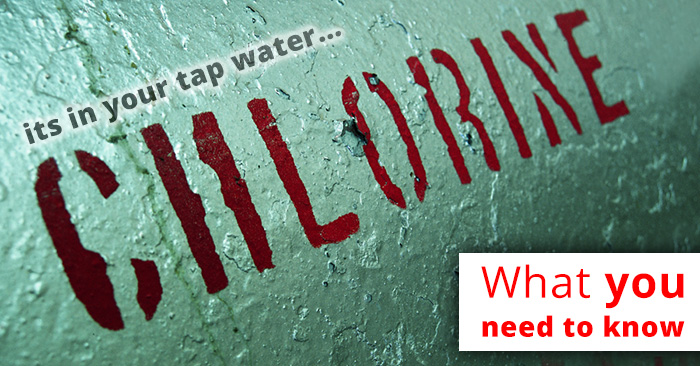Why are chlorine and chloramine added to tap water?
Generally the water that comes out from the water treatment plant is free from pathogens but as the water travels through the pipes to the faucet in your home a lot can happen. Pipe leakage, water tanks, water that sits in the faucet for a period. Chlorine and chloramine is very efficient in killing the bad bacteria as long as there is a minimum concentration at the faucet. Chlorine has been used for 100 years to keep tap water safe to drink. When chlorine was first introduced to the water supply, it brought a rapid reduction in the spread of disease and other water-borne ailments. It made it easier for cities and towns to purify drinking water and to keep their residents safe. Chlorine kills microorganisms such as bacteria, germs, infections, and protozoans. The objective is to keep chlorine at a sufficient level all the way to the tap as organisms could be picked up along the way due to old pipes, leaks or contamination. EPA, WHO and other international organisations have set these targets based on safe levels for humans. Chloramine which in simple terms is made up of ammonia and free chlorine works in a similar way to chlorine. The reason it’s used more and more frequently for water treatment is that the taste and odor are better than chlorine. The amount of chlorine or chloramine added depends on how much is required to destroy all organisms in the water systems. Normally greater amounts are required for hard water. Using a free-chlorine test-strip on water treated with chloramine will not show any results, as the free-chlorine has turned into chloramine in the presence of ammonia.Why do you want to remove or reduce chlorine and chloramine?
With hundreds of studies carried out, there is little evidence that the recommended levels of chlorine and chloramine have any direct negative health impact on humans. However, there are indirect issues- May cause tap water to taste or smell unpleasant and change the taste of coffee, tea, and other drinks
- Chlorine combined with organic materials may cause bi-products such as THMs and VOCs whereof some are suspected to be cancerous.
- Causes harm to small animals such as aquarium fish and other house pets as the chlorine also kills healthy bacteria
- Chloramine does not disperse from the water like chlorine does. In the event that you let chlorinated water sit for 30 minutes to an hour, it will disperse from the standing water. However it may still leave behind bi-products and VOCs.
Consequently, removing chlorine and chloramine from drinking water can be a good idea.
Why does water taste so much like chlorine?
To provide clean and safe drinking tap water, free chlorine or in some cases chloramine is often added to the water. Chlorine has no impact on your health, but it can give water a bad taste and odor. The amount of chlorine added varies significantly depending on region and time of year, as well as water source, temperature and other factors. Therefore, the taste also varies greatly throughout the year. Chlorine is also added to most bottled water for safety reasons. You can check it on the labels.
How can I remove chlorine and chloramine from tap water?
There are several types of filters that remove chlorine and chloramine including Reverse Osmosis, Ultraviolet light and Activated Carbon. One of the most efficient technique for chlorine and chloramine removal is Activated Carbon. In addition to its adsorption properties, Activated Carbon is also a catalyst that converts free chlorine (Hypochlorite ) to chloride which is easily adsorbed. EcoPro which is an affordable high-quality water filter has been independently tested and proven to remove more than 95% of chlorine and chloramine. The filter is made up of an organic carbon block that provides both activated and catalytic carbon. An added advantage of EcoPro is that it does not filter out healthy minerals and that the cartridges are biodegradable. Only use independently tested and certified water filters and check specifically that it’s tested to remove chloramine if this is the concern. See how TAPP Water compares to PUR, Brita and Culligan filters.In summary
- Chlorine and chloramine are added to tap water to make it safe for drinking, and generally should not have any negative health impact.
- As a safety precaution, it might be a good idea to reduce or remove chlorine and chloramine from drinking water to avoid possible negative effects.
- Choose an independently certified filter such as EcoPro with activated and catalytic carbon to ensure that chlorine and chloramine are reduced or removed.





